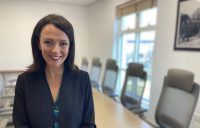Educators in the UAE are seeking to create inclusive schools where children of differences learn together. They say that real inclusion cannot be brought about unless everyone embraces it
Dubai, Nov 18, 2021: Schools in the UAE, especially Dubai, lead the way in the region when it comes to inclusive education, thanks to a series of initiatives and regulations over the past decade and a half.
The UAE has made significant strides in inclusion in recent years at a local, government and federal level. Both public and private institutions are playing a vital role in implementing the policies. A collaborative approach between various stakeholders is paving the way for further improvements in best practices.
Meanwhile, affordability of such education continues to remain a key challenge, as parents of students of determination have to shell out about 50% additional premium on regular tuition fee to educate their wards.
Establishing a legal framework
The past decade witnessed UAE making significant inroads into including people of determination in the mainstream educational settings. In 2006, the UAE government passed a new law that guarantees equal care, rights and opportunities for people of determination in education, health care, training and rehabilitation. Federal Law No. 29 of 2006 also places emphasis on integrating people of determination into public and private schools among other facilities. According to the law, a person’s special needs shall not be a reason to deprive him/her of their rights and services.
In 2010, the UAE ratified and adopted the United Nations Convention on the Rights of Persons with Disabilities (UNCRPD).
“The UAE has taken gigantic steps in embracing people with disabilities in the mainstream educational settings,” says Gloria Rebello, Head of the Department – Primary, Arabic and Scholastic Units, Al Noor Training Centre.
Within the UAE, Dubai took the lead in creating a fully cohesive and inclusive society by 2020, where the rights and access to equitable opportunities for people of determination are assured and protected.
In 2014, Dubai passed what is referred to as ‘Law No. (2) of 2014 Concerning Protection of the Rights of Persons with Disabilities in the Emirate of Dubai’ with an aim to provide equal accessibility to persons with disabilities, protecting them from all forms of discrimination, abuse, neglect and exploitation; and integrating them into society. The law also enabled the setting up of a permanent Higher Committee for Protection of the Rights of Persons with Disabilities to ensure integration and coordination of work among the various concerned entities.
Dubai passed the Executive Council Resolution No.2 of 2017 on regulating private schools in the emirate. It provides strong support for the effective inclusion of students of determination into the mainstream.
In continuation, the Dubai Disabilities Strategy was announced and as a part of it, the Inclusive Education Taskforce was established, headed by the Knowledge and Human Development Authority (KHDA).
KHDA – setting the agenda
In an effort to specifically guide schools and educational institutions towards creating a fully inclusive society, the KHDA in 2017 published a comprehensive Dubai Inclusive Education Policy Framework.
The framework aims to facilitate ‘the development of an emirate-wide system of integrated services and set aspirations for a wide variety of settings; early childhood services, primary, secondary and higher education settings, including special needs centres’.
It also laid out in detail the standards for educational institutions, teacher training and monitoring, school improvement planning and facilitated communication with other stakeholders.
“In Dubai, the KHDA has been instrumental in ensuring that inclusion for all is an expectation for all,” says Claire Hitchings, Assistant Head of Primary School, Uptown International School.
The KHDA has also published a detailed guide to support schools in developing the capacity required to adopt and embed inclusive education in accordance with the agreed quality standards.
The document clearly outlines the need for schools to adopt an alternative model of education (different from the medical model, where people tend to view disability as something that is ‘wrong’ with a person’s body or mind.) more in line with the UNCRPD’s principles and directives. Such an approach, it argues, will enable a school/institution ‘to recognise a student of determination’s right to access the same quality of education as other students and recognise that disability is created from influences outside of the person as constructed socially by the discriminatory attitudes, policies and systems.’
It is this approach that will enable the development of more effective teaching, learning and curriculum development processes, taking care of the requirements of all students, irrespective of their abilities or needs.
“The guidelines are clear so that schools understand that effective teaching practices are based on personalised consideration of the strengths and needs of each student,” says Hitchings.
Infrastructure for inclusive education
Schools and educational institutions have to make additional investments in creating certain basic facilities for creating adequate infrastructure, specialised and trained staff, facilities for assessment and guidance sessions along with tech-enabled solutions.
Among the basic facilities schools/ educational institutions need to provide are infrastructure-related facilities such as wheelchair ramps and elevators, toilets, buses, special education resource rooms and sensory and comprehensive rooms; specialised staff: special education teacher, teacher assistant, sign language interpreter, braille education specialist, visual impairment specialist, psychologist, speech and language specialist, special education specialist; assessment and diagnosis of students of determination by a multidisciplinary team; speech and language sessions, braille education sessions, behaviour modification sessions, sign language sessions; counselling, awareness and guidance sessions for parents of students of determination; devices and assistive technologies according to their special needs and workshops and courses for administration staff, teachers, guides, specialists and parents of students.
“The Dubai Inclusive Education Policy Framework is an important and valued document to ensure achievement and opportunity for all students. It supports schools, families and external professionals, to work together to ensure that all students have personalised and meaningful experiences for both learning and life,” says Ellen Henretty, Vice Principal at GEMS Wellington Academy – Silicon Oasis.
Experts have also called upon schools to share their experiences to facilitate further improvement and modification of inclusive policies. “Now the inclusion agenda is truly at the forefront, it should never stop evolving. To support the cause, schools should be working together across the public and private sectors to share best practice initiatives and outcomes with each other,” says Michelle Beagley, Head of Therapy & Senior Speech & Language Therapist, Sensation Station.
Meanwhile, education institutions across the country and especially in Dubai have developed their own inclusion policies, fully incorporating the KHDA guidelines.
According to Ashleigh Thompson, Head of Primary, American Academy for Girls, all schools must have a commitment to foster a culture of inclusion. “When we improve the quality of inclusion within our schools, we improve education for all,” she says, adding that leaders should promote inclusion at all levels and across all departments.
The KHDA guideline also emphasises ‘the need to work in partnership with parents, specialists and other community members to devise strong, comprehensive and sustainable systems of inclusion.’
“It is important to ensure all stakeholders – including staff, parents, students and community members – are involved in writing policies and procedures and that they have the tools and skills to implement these. In addition these items should be regularly added to meeting agendas. At all times, but especially so during implementation, regular feedback should be sought from stakeholders to ensure smooth processes and relevant adaptation,” says Thomson.
Henretty also stresses on the need for schools, especially at the beginning of this journey, to prioritise inclusion as if it “is not just seen as the responsibility of the inclusion department; it should have a whole-school approach and should be seen as the responsibility of all stakeholders within the school community.”
Time should be spent with these stakeholders, she notes, to ensure a consistent definition of inclusive culture is agreed, as well as to ensure a shared understanding of what an inclusive school community looks like.
Individual Education Program
Another crucial element of inclusive education is the development of the Individual Education Program (IEP) and involvement of all stakeholders is especially crucial in this process. A result-oriented IEP is developed by a team of individuals that comprises teachers, professionals, the child and the child’s parents – referred to as the Trans-Disciplinary Assessment Team. This is done usually following reviews of all the existing data and assessment information that is available about the child.
“The IEP acts as a map, stating where the child currently is, where he needs to go and the ways and means to reach there. IEPs should take into consideration the students’ strengths and challenges, using the strengths to improve his or her challenges, and include a timeline for meeting objectives that are specific, measurable, observable and easily connected to classroom activities,” says Rebello.
According to her, at Al Noor, the Trans Disciplinary Assessment Team prepares the IEP and the Trans Disciplinary Intervention team comprising teachers, professionals and parents work on the IEP. “The Centre follows a Curriculum Based Assessment Record which is individualised and developmentally based,” she adds.
As Thompson notes, it is important for schools to ensure that as part of their policy, a clear procedure is outlined on how to implement an IEP. “This will include referrals, observations, eligibility parameters, meeting schedules, parental involvement, student involvement, appropriate services, accommodations and adaptations, targets related to individual needs, review and evaluation,” she says.
Hitchings argues that bi-annual reviews are a must. “At our school, IEP is reviewed twice a year with the development team being fully involved within the review. We review our assessment data after each data point entry and ensure any student who is not making at least expected progress has interventions put in place to further support their progress,” she says.
A classroom for all
Another major challenge is in teaching students of multiple levels in the same grade. Universal Design for Learning (UDL) and differentiated teaching are among the methods that benefit students with diverse abilities in the classroom.
UDL is a way of teaching and learning which benefits all students, giving them an equal opportunity to succeed. “Teaching students who are at different learning levels can be difficult,” says Rebello. Differentiating learning abilities, she points out, will help teachers to present materials to keep all students engaged on all levels at the same time.
“Teachers who practice differentiation in the classroom may design lessons based on students’ learning styles, group students by shared interest, topic, or ability for assignments, continually assess and adjust lesson content to meet students’ needs,” she says adding that it is not just the teachers but also other students who become part stakeholders in the whole process.
“The class teacher and the special education teacher need to work as a team, ensuring that students are aware of it. They need to work with all the students in the classroom, using reinforcement strategies and behaviour modification techniques with all students,” she adds.
According to Henretty, the role of teachers is especially significant. “Teachers should consider how they can remove barriers for students by using tools and strategies which bring students up to the learning, rather than to bring the learning down to the ability of the students,” she says.
Schools across Dubai are required to have support teachers in place to enable the creation of inclusive classrooms and serve as a role model, coach and professional mentor for classroom teachers.
And it is not easy for teachers as well. “Teachers face various challenges in the inclusive classroom, ranging from high numbers of students to lack of resources and lack of competency which are all barriers to the implementation of inclusive education,” says Rebello, adding that many teachers lack experience in an inclusion setting, along with little or no experience of working with severe and profound disabilities. “They face difficulties in creating activities that include all students,” she says emphasising the need to ensure that teachers are fully trained and prepared.
Beagley notes that it is important to encourage teachers to liaise and collaborate with specialist professionals, who in turn should support teachers in their daily efforts.
Parents play the most important role in this journey. Many a time they are left alone and in need of community help. Schools can play a significant role in bringing parents together, introducing them to various communities and professionals.
“Consistent use of strategies and techniques at home and in school benefits the students. Also, providing access to and information about professionals such as therapists is important so that parents can gain an insight into the role they can play at home,” says Henretty.
As Beagley notes, parents know their children best. “We must always respect the wealth of information they can share with us and nurture a supportive, open channel of communication with parents in order to work jointly to do what is best for the child inside and outside of the school gates.”
Meanwhile, it is also important to reduce the burden of parents making inclusive education more affordable.
As Henretty notes, many families face extensive financial commitments if their child receives external therapy or professional help from specialist organisations. “Supportive grants or financial contributions from regulatory or government authorities towards schools or families would significantly help many families who struggle with the financial burden of these costs.”
According to her, these financial difficulties result in some students unable to get the required support they need outside of school.
In short, an inclusive culture starts from the idea that every person in the school – students, educators, administrators, support staff and parents – should have a keen sense of belongingness to the school in order to reach their full potential and contribute as successful members of society.
Rebello believes that there is much more to achieving an inclusive school culture than offering admission to students with special needs or imparting diversity training to staff or building ramps or running workshops on bullying.
“Real inclusion is about actions, not just words,” she says, adding that it entails a shift in the attitudes of all the stakeholders as well as the development of policies and practices that strengthen inclusive behaviour.
- With inputs from Ritika








